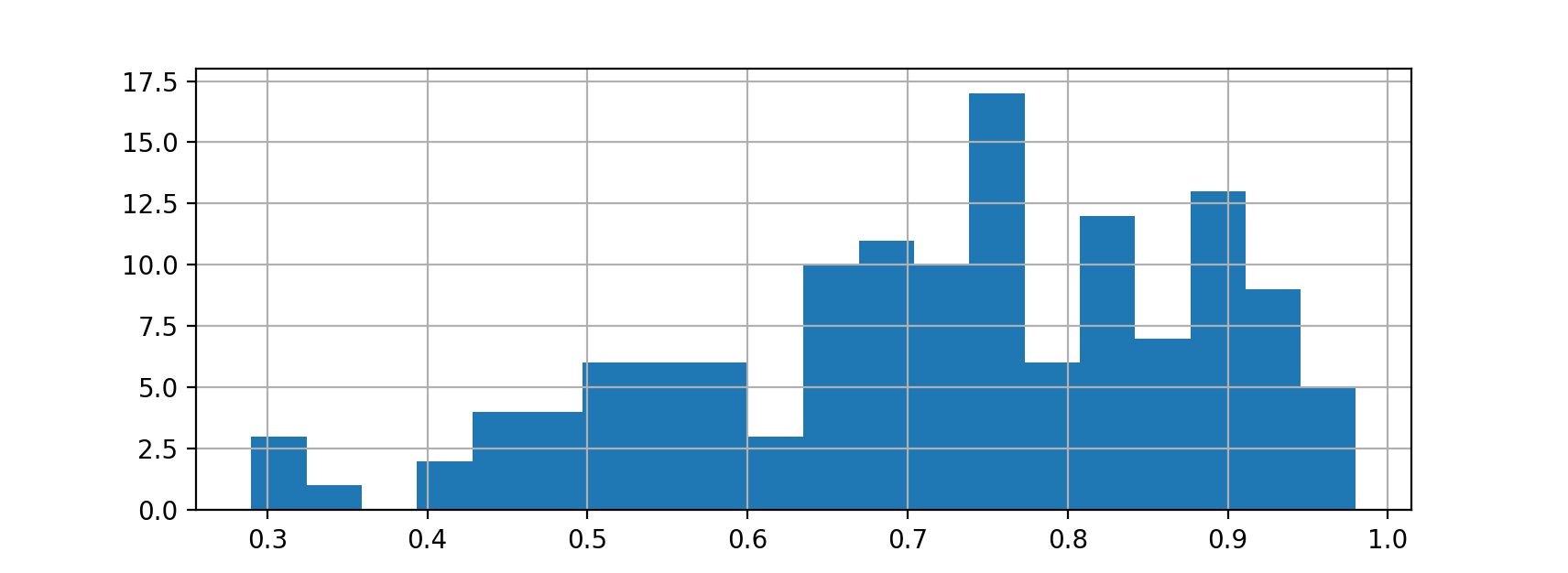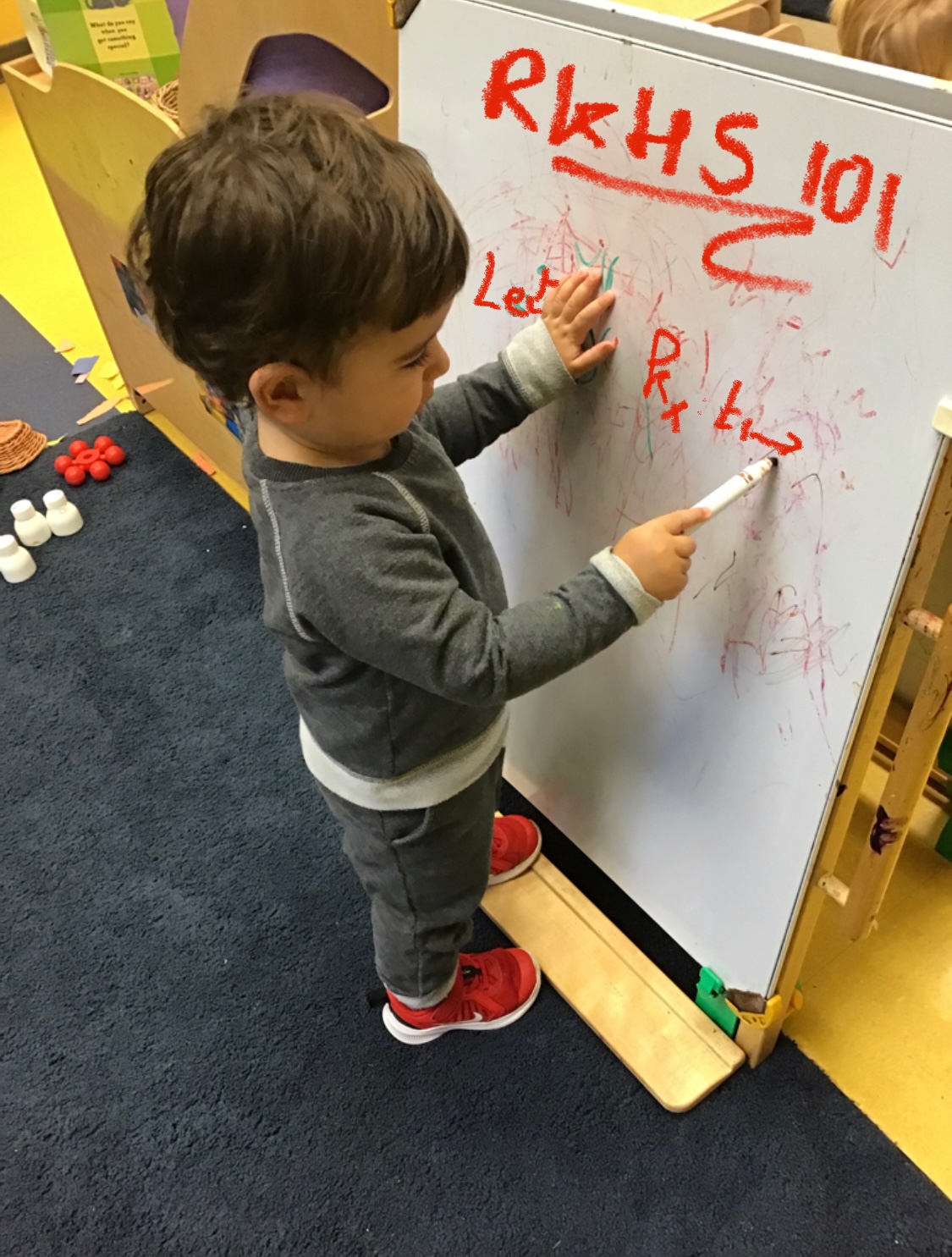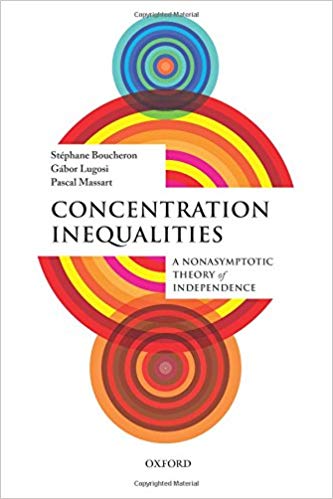Learning
Dr. Matthieu R Bloch
Monday, December 6, 2021
Logistics
General announcements
Assignment 6 due December 7, 2021 for bonus, deadline December 10, 2021
Last lecture!
Let me know what’s missing
Expect an email from me tonight
Midterm 2 statistics
- Overall: AVG: 72% - MIN: 29% - MAX: 98%

What we have learned this Fall
Hilbert spaces
Spaces of functions can be manipulated almost just as easily
Finite dimensional is fairly natural
Infinite dimensional can be manipulated just as well using orthobases
With orthobases, vectors in infinite dimensional separates Hilbert spaces are like square summable sequences
Regression
Who knew solving \(\vecy=\matA\vecx\) could be so useful?
SVD provides lots of insights
Regression in Hilbert spaces
- Perhaps biggest lesson of the course
- Representer theorem allows us to do regression in infinite dimensional Hilbert spaces
- RKHS provide the kind of Hilbert spaces that naturally embed our data
What’s on the agenda for today?

More on learning and Bayes classifiers
Lecture notes 17 and 23
A simpler supervised learning problem
Consider a special case of the general supervised learning problem
Dataset \(\calD\eqdef\{(\bfx_1,y_1),\cdots,(\bfx_N,y_N)\}\)
- \(\{\bfx_i\}_{i=1}^N\) drawn i.i.d. from unknown \(P_{\bfx}\) on \(\calX\)
- \(\{y_i\}_{i=1}^N\) labels with \(\calY=\{0,1\}\) (binary classification)
Unknown \(f:\calX\to\calY\), no noise.
Finite set of hypotheses \(\calH\), \(\card{\calH}=M<\infty\)
- \(\calH\eqdef\{h_i\}_{i=1}^M\)
Binary loss function \(\ell:\calY\times\calY\rightarrow\bbR^+:(y_1,y_2)\mapsto \indic{y_1\neq y_2}\)
In this very specific case, the true risk simplifies \[ R(h)\eqdef\E[\bfx y]{\indic{h(\bfx)\neq y}} = \P[\bfx y]{h(\bfx)\neq y} \]
The empirical risk becomes \[ \widehat{R}_N(h)=\frac{1}{N}\sum_{i=1}^{N} \indic{h(\bfx_i)\neq y_i} \]
Can we learn?

Our objective is to find a hypothesis \(h^*=\argmin_{h\in\calH}\widehat{R}_N(h)\) that ensures a small risk
For a fixed \(h_j\in\calH\), how does \(\widehat{R}_N(h_j)\) compares to \({R}(h_j)\)?
Observe that for \(h_j\in\calH\)
The empirical risk is a sum of iid random variables \[ \widehat{R}_N(h_j)=\frac{1}{N}\sum_{i=1}^{N} \indic{h_j(\bfx_i)\neq y_i} \]
\(\E{\widehat{R}_N(h_j)} = R(h_j)\)
\(\P{\abs{\widehat{R}_N(h_j)-{R}(h_j)}>\epsilon}\) is a statement about the deviation of a normalized sum of iid random variables from its mean
We’re in luck! Such bounds, a.k.a, known as concentration inequalities, are a well studied subject
Concentration inequalities: basics
Let \(X\) be a non-negative real-valued random variable. Then for all \(t>0\) \[\P{X\geq t}\leq \frac{\E{X}}{t}.\]
Let \(X\) be a real-valued random variable. Then for all \(t>0\) \[\P{\abs{X-\E{X}}\geq t}\leq \frac{\Var{X}}{t^2}.\]
Let \(\{X_i\}_{i=1}^N\) be i.i.d. real-valued random variables with finite mean \(\mu\) and finite variance \(\sigma^2\). Then \[\P{\abs{\frac{1}{N}\sum_{i=1}^N X_i-\mu}\geq\epsilon}\leq\frac{\sigma^2}{N\epsilon^2}\qquad\lim_{N\to\infty}\P{\abs{\frac{1}{N}\sum_{i=1}^N X_i-\mu}\geq \epsilon}=0.\]
Back to learning
By the law of large number, we know that \[ \forall\epsilon>0\quad\P[\{(\bfx_i,y_i)\}]{\abs{\widehat{R}_N(h_j)-{R}(h_j)}\geq\epsilon}\leq \frac{\Var{\indic{h_j(\bfx_1)\neq y_1}}}{N\epsilon^2}\leq \frac{1}{N\epsilon^2}\]
Given enough data, we can generalize
How much data? \(N=\frac{1}{\delta\epsilon^2}\) to ensure \(\P{\abs{\widehat{R}_N(h_j)-{R}(h_j)}\geq\epsilon}\leq \delta\).
That’s not quite enough! We care about \(\widehat{R}_N(h^*)\) where \(h^*=\argmin_{h\in\calH}\widehat{R}_N(h)\)
- If \(M=\card{\calH}\) is large we should expect the existence of \(h_k\in\calH\) such that \(\widehat{R}_N(h_k)\ll R(h_k)\)
\[ \P{\abs{\widehat{R}_N(h^*)-{R}(h^*)}\geq\epsilon} \leq \P{\exists j:\abs{\widehat{R}_N(h_j)-{R}(h_j)}\geq\epsilon} \]
\[ \P{\abs{\widehat{R}_N(h^*)-{R}(h^*)}\geq\epsilon} \leq \frac{M}{N\epsilon^2} \]
If we choose \(N\geq\lceil\frac{M}{\delta\epsilon^2}\rceil\) we can ensure \(\P{\abs{\widehat{R}_N(h^*)-{R}(h^*)}\geq\epsilon}\leq \delta\).
- That’s a lot of samples!
Concentration inequalities: not so basic
We can obtain much better bounds than with Chebyshev
Let \(\{X_i\}_{i=1}^N\) be i.i.d. real-valued zero-mean random variables such that \(X_i\in[a_i;b_i]\) with \(a_i<b_i\). Then for all \(\epsilon>0\) \[\P{\abs{\frac{1}{N}\sum_{i=1}^N X_i}\geq\epsilon}\leq 2\exp\left(-\frac{2N^2\epsilon^2}{\sum_{i=1}^N(b_i-a_i)^2}\right).\]
In our learning problem \[ \forall\epsilon>0\quad\P{\abs{\widehat{R}_N(h_j)-{R}(h_j)}\geq\epsilon}\leq 2\exp(-2N\epsilon^2)\]
\[ \forall\epsilon>0\quad\P{\abs{\widehat{R}_N(h^*)-{R}(h^*)}\geq\epsilon}\leq 2M\exp(-2N\epsilon^2)\]
We can now choose \(N\geq \lceil\frac{1}{2\epsilon^2}\left(\ln \frac{2M}{\delta}\right)\rceil\)
\(M\) can be quite large (almost exponential in \(N\)) and, with enough data, we can generalize \(h^*\).
How about learning \(h^{\sharp}\eqdef\argmin_{h\in\calH}R(h)\)?
Learning can work!
If \(\forall j\in\calH\,\abs{\widehat{R}_N(h_j)-{R}(h_j)}\leq\epsilon\) then \(\abs{R(h^*)-{R}(h^\sharp)}\leq 2\epsilon\).
How do we make \(R(h^\sharp)\) small?
- Need bigger hypothesis class \(\calH\)! (could we take \(M\to\infty\)?)
- Fundamental trade-off of learning

Probably Approximately Correct Learnability
- A hypothesis set \(\calH\) is (agnostic) PAC learnable if there exists a function \(N_\calH:]0;1[^2\to\bbN\) and a learning algorithm such that:
- for very \(\epsilon,\delta\in]0;1[\),
- for every \(P_\bfx\), \(P_{y|\bfx}\),
- when running the algorithm on at least \(N_\calH(\epsilon,\delta)\) i.i.d. examples, the algorithm returns a hypothesis \(h\in\calH\) such that \[\P[\bfx y]{\abs{{R}(h)-R(h^\sharp)}\leq\epsilon}\geq 1-\delta\]
The function \(N_{\calH}(\epsilon,\delta)\) is called sample complexity
We have effectively already proved the following result
A finite hypothesis set \(\calH\) is PAC learnable with the Empirical Risk Minimization algorithm and with sample complexity \[N_\calH(\epsilon,\delta)={\lceil{\frac{2\ln(2\card{\calH}/\delta)}{\epsilon^2}}\rceil}\]
What is a good hypothesis set?

Ideally we want \(\card{\calH}\) small so that \(R(h^*)\approx R(h^\sharp)\) and get lucky so that \(R(h^*)\approx 0\)
In general this is not possible
Remember, we usually have to learn \(P_{y|\bfx}\), not a function \(f\)
Questions
- What is the optimal binary classification hypothesis class?
- How small can \(R(h^*)\) be?
Supervised learning model
We revisit the supervised learning setup (slight change in notation)
Dataset \(\calD\eqdef\{(X_1,Y_1),\cdots,(X_N,Y_N)\}\)
- \(\{X_i\}_{i=1}^N\) drawn i.i.d. from unknown \(P_{X}\) on \(\calX=\bbR^d\)
- \(\{Y_i\}_{i=1}^N\) labels with \(\calY=\{0,1,\cdots,K-1\}\) (multiclass classification)
Unknown \(P_{Y|X}\)
Binary loss function \(\ell:\calY\times\calY\rightarrow\bbR^+:(y_1,y_2)\mapsto \indic{y_1\neq y_2}\)
The risk of a classifier \(h\) is \[ R(h)\eqdef\E[XY]{\indic{h(X)\neq Y}} = \P[X Y]{h(X)\neq Y} \]
We will not directly worry about \(\calH\), but rather about \(R(\hat{h}_N)\) for some \(\hat{h}_N\) that we will estimate from the data
Bayes classifier
- What is the best risk (smallest) that we can achieve?
- Assume that we actually know \(P_{X}\) and \(P_{Y|X}\)
- Denote the a posteriori class probabilities of \(\bfx\in\calX\) by \[ \eta_k(\bfx) \eqdef \P{Y=k|X=\bfx}\]
- Denote the a priori class probabilities by \[\pi_k\eqdef \P{Y=k}\]
The classifier \(h^\text{B}(\bfx)\eqdef\argmax_{k\in[0;K-1]} \eta_k(\bfx)\) is optimal, i.e., for any classifier \(h\), we have \(R(h^\text{B})\leq R(h)\). \[ R(h^{\text{B}}) = \E[X]{1-\max_k \eta_k(X)} \]
- Terminology
- \(h^B\) is called the Bayes classifier
- \(R_B\eqdef R(h^B)\) is called the Bayes risk
Other forms of the Bayes classifier
\(h^\text{B}(\bfx)\eqdef\argmax_{k\in[0;K-1]} \eta_k(\bfx)\)
\(h^\text{B}(\bfx)\eqdef\argmax_{k\in[0;K-1]} \pi_k p_{X|Y}(\bfx|k)\)
For \(K=2\) (binary classification): log-likelihood ratio test \[ \log\frac{p_{X|Y}(\bfx|1)}{p_{X|Y}(\bfx|0)} \gtrless \log \frac{\pi_0}{\pi_1} \]
If all classes are equally likely \(\pi_0=\pi_1=\cdots=\pi_{K-1}\) \[ h^\text{B}(\bfx)\eqdef\argmax_{k\in[0;K-1]} p_{X|Y}(\bfx|k) \]
Assume \(X|Y=0\sim\calN(0,1)\) and \(X|Y=1\sim\calN(1,1)\). The Bayes risk for \(\pi_0=\pi_1\) is \(R(h^\text{B})=\Phi(-\frac{1}{2})\) with \(\Phi\eqdef\text{Normal CDF}\)
In practice we do not know \(P_X\) and \(P_{Y|X}\)
- Plugin methods: use the data to learn the distributions and plug result in Bayes classifier
Nearest neighbor classifier
Back to our training dataset \(\calD\eqdef\{(\bfx_1,y_1),\cdots,(\bfx_N,y_N)\}\)
The nearest-neighbor (NN) classifier is \(h^{\text{NN}}(\bfx)\eqdef y_{\text{NN}(\bfx)}\) where \(\text{NN}(\bfx)\eqdef \argmin_i \norm{\bfx_i-\bfx}\)
Risk of NN classifier conditioned on \(\bfx\) and \(\bfx_{\text{NN}(\bfx)}\) \[ R_{\text{NN}}(\bfx,\bfx_{\text{NN}(\bfx)}) = \sum_{k}\eta_k(\bfx_{\text{NN}(\bfx)})(1-\eta_k(\bfx))= \sum_{k}\eta_k(\bfx)(1-\eta_k(\bfx_{\text{NN}(\bfx)})). \]
- How well does the average risk \(R_{\text{NN}}=R(h^{\text{NN}})\) compare to the Bayes risk for large \(N\)?
Let \(\bfx\), \(\{\bfx_i\}_{i=1}^N\) be i.i.d. \(\sim P_{\bfx}\) in a separable metric space \(\calX\). Let \(\bfx_{\text{NN}(\bfx)}\) be the nearest neighbor of \(\bfx\). Then \(\bfx_{\text{NN}(\bfx)} \to \bfx\) with probability one as \(N\to\infty\)
Let \(\calX\) be a separable metric space. Let \(p(\bfx|y=0)\), \(p(\bfx|y=1)\) be such that, with probability one, \(\bfx\) is either a continuity point of \(p(\bfx|y=0)\) and \(p(\bfx|y=1)\) or a point of non-zero probability measure. As \(N\to\infty\), \[R(h^{\text{B}}) \leq R(h^{\text{NN}})\leq 2R(h^{\text{B}})(1-R(h^{\text{B}}))\]
K Nearest neighbors classifier
- Can drive the risk of the NN classifier to the Bayes risk by increasing the size of the neighborhood
- Assign label to \(\bfx\) by taking majority vote among \(K\) nearest neighbors \(h^\text{$K$-NN}\) \[\lim_{N\to\infty}\E{R(h^{\text{$K$-NN}})}\leq \left(1+\sqrt{\frac{2}{K}}\right)R(h^{\text{B}})\]
Let \(\hat{h}_N\) be a classifier learned from \(N\) data points; \(\hat{h}_N\) is consistent if \(\E{R(\hat{h}_N)}\to R_B\) as \(N\to\infty\).
If \(N\to\infty\), \(K\to\infty\), \(K/N\to 0\), then \(h^{\text{$K$-NN}}\) is consistent
- Choosing \(K\) is a problem of model selection
- Do not choose \(K\) by minimizing the empirical risk on training: \[\widehat{R}_N(h^{\text{$1$-NN}}) = \frac{1}{N}\sum_{i=1}^N\indic{h_1(\bfx_i)=y_i}=0\]
- Need to rely on estimates from model selection techniques (more later!)